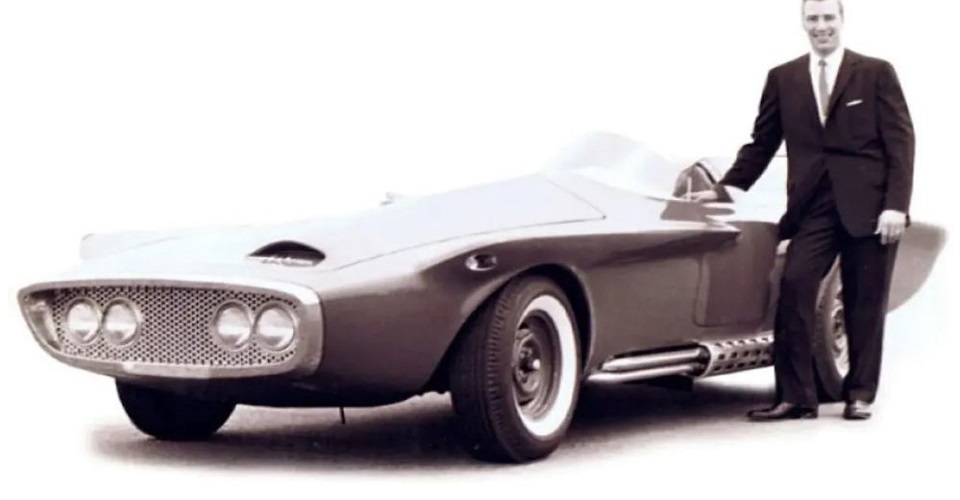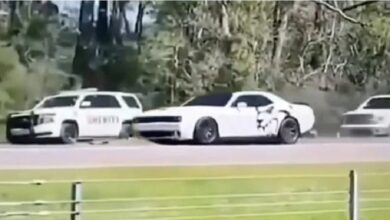9 Old Dodge Cars Gearheads Go Crazy For.
Old Dodge cars have a long and interesting history that have shaped the Dodge of today, incorporating both the technological tip of the spear and Dodge’s dynamic styling. While many old and storied performance brands like Oldsmobile, Pontiac, and Mercury have hung up their racing helmets and been put out to pasture, Dodge is still going strong.
Old Dodge cars are highly sought after, and as one of the original Chrysler Mopar legacy brands (the others being Plymouth, DeSoto, Chrysler, and Imperial), old Dodge cars enjoy a large following across the spectrum from restoration to racing.
1: Dodge Power Wagon
Before old Dodge cars could gain fame, old Dodge trucks (under the Fargo brand name) were enlisted to help win the Second World War as WC54 ambulances, light 4x4s, light-medium 6×6 WC-series trucks, and 3-ton trucks.
Over 400,000 Dodge trucks went into active service for American, Canadian, Chinese, and Russian forces (you’re welcome, comrade!) during the Second World War, and by late 1945, Dodge had already pivoted to civilian production of the highly successful Power Wagon—a name still employed by the Stellantis Ram truck brand today.
2: Chrysler Hires Virgil Exner
By the late 1940s, Dodge’s cars already seemed old; At Studebaker, a young Bauhaus-inspired artist named Virgil Exner had experienced success as the designer of the breakthrough 1947 Studebaker Starlight coupe, but he experienced friction with Raymond Loewy, Studebaker’s headline-making star designer, and sought refuge at Chrysler, who hired him in 1949.
3: 1956 Dodge D-500: Performance For The People
It wouldn’t take long for the stodgy reputation of old Dodge cars to evolve into their now-famous jet-fighter shape, and by 1955 Virgil Exner had ushered in the “Forward Look” of the 1955 Dodges.
By 1956, Dodge’s optional Red Ram Hemi had swelled from 270 cubic inches to an available 315 cubic inches putting out 260 hp, and the longer, lower, wider lines of the Dodge D-500 ushered in a long history of Dodge performance with a bang.
4: 1959 Dodge Coronet
While first seen in the 1958 models in 350 and 361 cubic-inch form, the 383ci B-series wedge-head big-block of 1959 would become the bulwark for much of the muscle car era to come, and in an ironic twist, the 1959 Dodge Coronet Silver Challenger would be the first-ever use of the Challenger name on Dodge equipment.
The final year of fourth-generation Dodge Coronet production in 1959 would mark the high point of Exner’s Forward look styling for the Dodge portfolio, and while real fins would soldier on one more year, the 1959 models would be their zenith.
5: Virgil Exner Out, Elwood Engel In
During Exner’s recovery, a team of Dodge stylists was directed by management to downsize all models based on false intelligence that GM was eliminating full-sized vehicles for the 1961 model year due to the building economic recession.
Those hasty redesigns were incorporated into the 1961 models despite Exner’s opposition. His concerns were founded; when the 1961 models came out, they were widely criticized for their awkward “plucked chicken” proportions and sales plummeted.
6: 1964 Dodge Polara
As old Dodge cars go, it’s the perfect way to get up close and personal with the NHRA’s short-lived but hotly contested AF/X class from the mid-1960s; to gain a competitive advantage, racers moved both axles forward to place more weight on the rear, with the rear axle moving forward more than the front axle ever so slightly so that the total reduction in wheelbase fell under the 2 percent alternation rule.
The result was a car that launched hard with the underwhelming tires of the era, and that had a radical look that many thought was “funny,” hence the name “funny car” was born. Sawyer’s car, though not originally an altered-wheelbase A F/Xer, was converted
7: 1966 Dodge Charger Street Hemi
By 1965, Dodge dealers had come to the notion that they were at a disadvantage; A wide assortment of V8 engines—including the new 426ci Street Hemi—high-end styling, bucket seating for front and rear passengers, a full cabin-length console, electroluminescent gauges, and fold-down rear seats for huge stowage capacity should’ve spelled huge success for Dodge, but sales were soft for the first-generation Charger model.
Only decades later would a wider world outside of the enthusiast domain learn to appreciate the old Dodge car that was the 1966-to-1967 Charger.
8: 1970 Dodge Super Bee
In 1968, Dodge consolidated its performance-oriented offerings under one roof, calling the group of cars the Scat Pack, distinguished by their ability to run the quarter mile in 15 seconds or quicker.
Dodge saw the success of Plymouth’s Road Runner and demanded a Coronet version, which bowed mid-year as the Super Bee. While the Super Bee would be offered through the 1971 model year on the Dodge Charger body style, it is the 1970 model—still based on the Coronet’s body lines—that gets the nod for one of the most unique-looking frontends ever styled with its immediately identifiable double-loop grille.













I couldn’t refrain from commenting. Well written!
Usually I do not learn article on blogs, but I would like to say
that this write-up very compelled me to take a look at and do it!
Your writing taste has been surprised me.
Thanks, very great article.
I got this web page from my buddy who informed me about this website and at the moment this time I am browsing this site
and reading very informative content at this time.